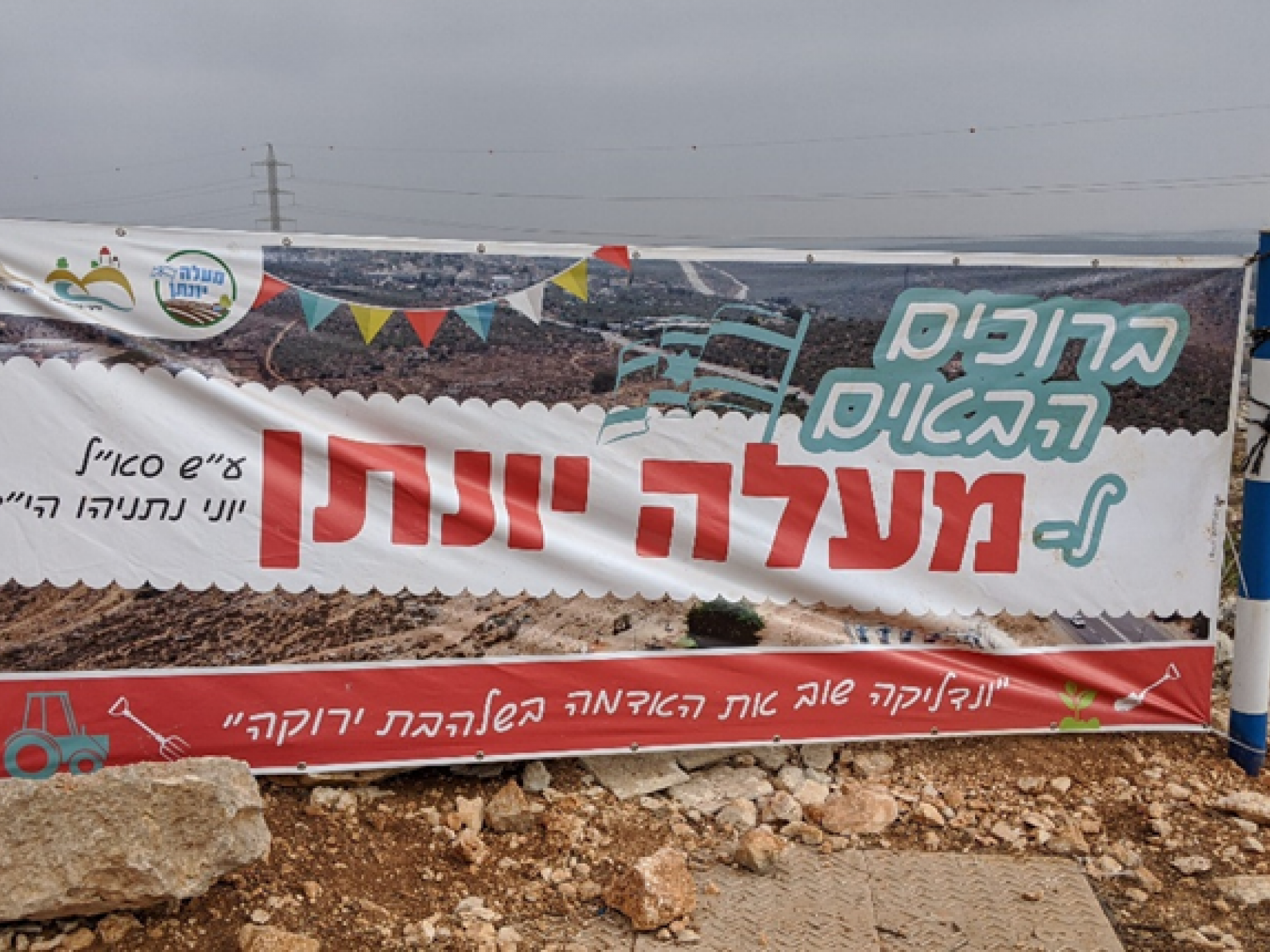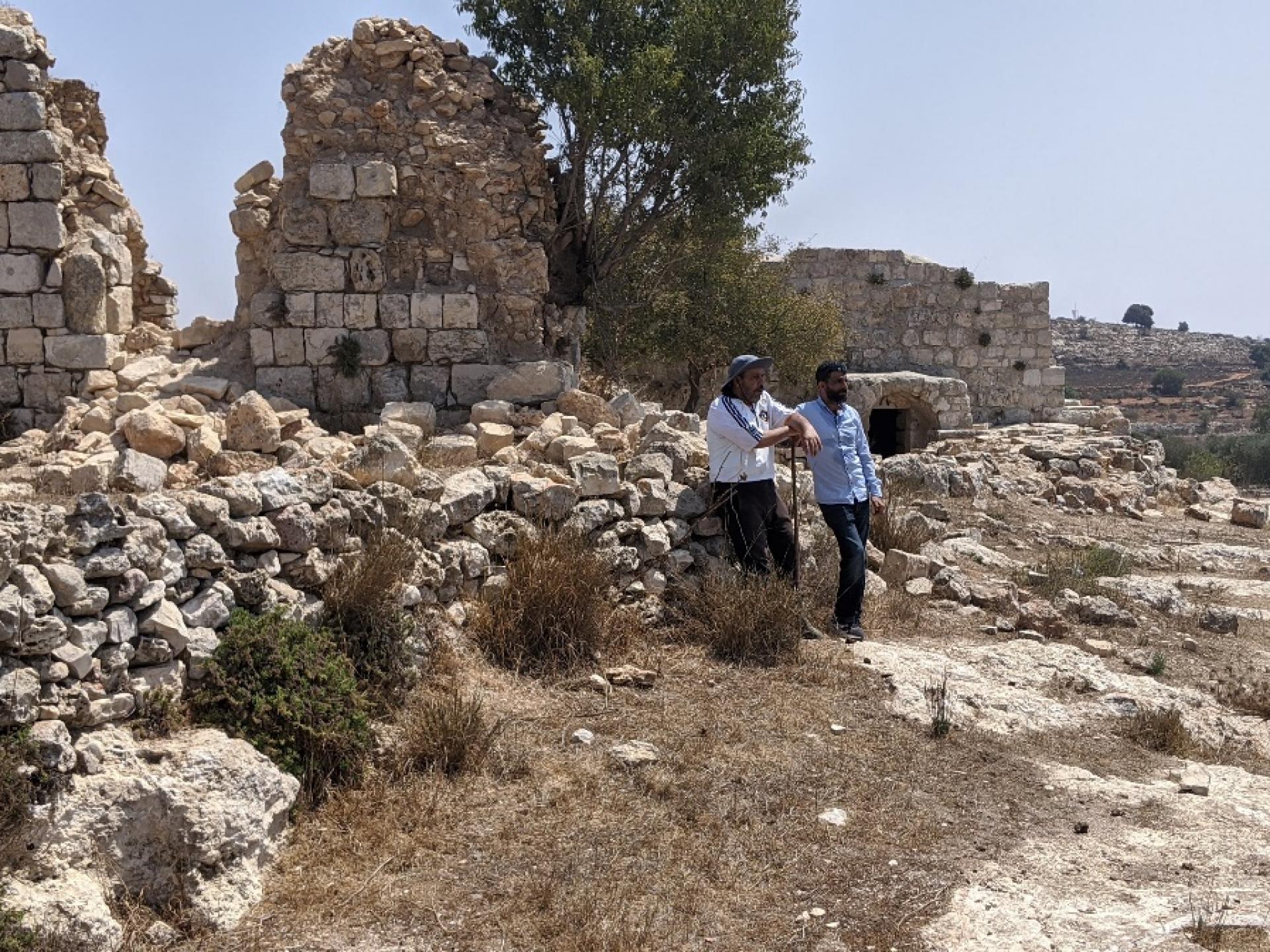Sinjil, Ma’leh Yonatan - as if the outpost was evacuated
Addition to the report: Settlers attacked and injured farmers in Sinjil on Thursay, 7.9.22, and the following day, after our last visit there on 6.9.22. Since then we’ve been receiving reports and videos about what’s happening, and the condition of the injured, even while I’m writing this report about our visit 31.8.22.
Here’s an update on the attack:
Settlers whom came from the direction of the Nahal Shilo Farm outpost, led by Michael Shlomo who lives there, attacked and injured farmers on their lands for two days. Some are still badly injured and hospitalized. A large police and army presence not only failed to assist the Palestinians and didn’t find it necessary to arrest any of the settlers – including Michael Shlomo who’s visible in a video (attached) raising a large rock and throwing it at the head of elderly farmer standing only a few feet away who fell injured to the ground – but even helped the settlers. This fact demonstrates Michael Shlomo is acting on behalf of the state of Israel and in its spirit. Shlomo lives with his wife and two children and 15 sheep on an agricultural outpost, but has no land of his own. He invades Palestinians’ lands, either alone or with settlers from neighboring outposts who’ve gained considerable experience in taking over Palestinian land. They do so knowing state institutions will eventually authorize the land grabs.
The report:
We stopped on the way to Sinjil at the location where the Ma’aleh Yonatan outpost had been established and removed. The sign is still there. Piles of garbage and junk testified to the dismantling of the two shacks that stood there. The ancient stone terraces which comprise the core of traditional Palestinian agriculture have been severely damaged by improvised steps settlers dug into them.
Sinjil
Sinjil is named after Raymond IV of St. Gilles who was known as the Count of Toulouse and erected a Crusader fortress at this location in 1198 (Source: Wikipedia article on the Amud Anan site).
We’d been invited to a meeting with the head of the Sinjil municipality, Dr. Muataz Tafsheh, together with our two hosts, members of the Ja’aferi family. Muataz gave up his dental practice in order to serve the municipality. (On September 7 his leg was injured during the settlers’ attack). The conversation was carried out in Arabic, English and Hebrew. He reported that 400 of the town’s 12,000 residents are employed in Israel and depend on work permits. They leave at 3 AM through four exits manned by soldiers from the nearby military base, who delay them with document inspections. 12,000 residents have emigrated over the years to other countries, primarily the United States.
He says the town contains many ancient sites; he’s working to restore them with Rivak. I asked whether it was possible to visit maqam Sheikh Umar (which I knew of from a photo in a 1981 book, Trees, Stones and Fabrics in the Wind, by Yigal Tumarkin). “Certainly,” he replied. We parted and left for Sheikh Umar.
From maqam Sheikh Umar we continued to maqam Abu al Ouf, named for a companion of the Prophet Muhammad, to learn more about it, its history, its accessibility and problems with the settlers. I conducted a number of video interviews with Issa and Ayyad Ja’aferi at this ancient, lovely site, containing all aspects of Palestinian life in former times, which they recounted with great nostalgia – from the family’s house near the maqam, the clay oven in the cave, the well, the sheep pen in the cave that could hold 500 sheep and goats, and the small cave in which the sheep’s fodder was kept. They’re afraid to renovate the site because they fear both the settlers and the Civil Administration since the site is located in Area C.
since the site is located in Area C.
Issa, 60 years old, is a retired physical education teacher and a farmer whose terraces, which he built during the two years of Covid, are the loveliest I’ve seen in the area. Issa is also a nature-loving hiker who invited us to join him in Wadi Kelt which descends to Jericho. We also found out that he is a skilled storyteller that photographing him doesn't bother him at all. On the contrary. (During the attack by the settlers on September 8 he lost consciousness as a result of inhaling tear gas, three months after undergoing open-heart surgery).
One fascinating story he told dealt with an older area of the town higher up the hill, where one can see the pit into which, according to local tradition and beliefs, Joseph was thrown by his brothers. Not far from the pit is the site known as “Shuriyya,” where Joseph’s brothers discussed what to do with him. The connection between biblical stories and local sites is very powerful among Palestinians, not less than, and perhaps even more than among Jews – who view such connections as mythology or folk beliefs, at least when the Jews don’t accept them.
Far away, in Safed, is the cave where Jacob isolated himself upon hearing the terrible news that his son had been killed by wild beasts. According to al Othmani, Moslem writing in the 14th century, the cave “quiets worries and unsettled feelings, as has been publicly proven, because prayers offered there are echoed on high.”
According to this story, Jacob’s sons traveled with their flocks a very great distance, from Safed to Sinjal and back again. The great interest Moslems evince in Joseph’s life and fate has its origin in the chapter Mohammad devoted to him in the Koran. The Moslem’s preserved Joseph’s tomb in Nablus for hundreds of years until Israel took it from them.




